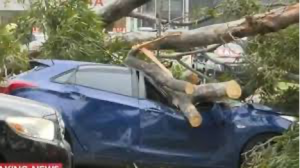
Trees – Wonderful or Horrible? All in the Eyes of Disputing Neighbours
Tree disputes in NSW are governed by the provision of the Trees (Disputes Between Neighbours) 2006 (Tree Dispute Act). It relates to trees and hedges on private, not public property. It is a law of last resort. First, try to resolve the issue with your neighbour. But I guess if you are interested in continuing reading this article, you may be past the point of no return.

The Tree Dispute Act provides a pathway to a certain resolution. If it applies, you cannot make a claim in nuisance. Whatever happens, do not trespass on neighbouring property.
If a tree is damaging property or is a threat to human life, take the following steps:-
1. Mediate with your neighbour. Community Justice Centres provide free mediation.

2. If negotiations or mediation fails to achieve a result, you may seek an order in the Land & Environment Court.
3. The court makes such orders it thinks fit, including restraining or preventative orders or to prevent injury.
4. The court does not have the power to order a tree to be pruned or cut down for blocking sunlight or obstructing views unless the tree is causing or is likely to cause property or injury to people.

5. The court has special procedures for hearing tree disputes and allows self-representation rather than engaging a lawyer.
6. The Land and Environment Court website is very informative and includes many case studies.
7. There is no statutory time limit in the Trees Dispute Act.
8. On the other hand, there is a general 6 year time limit for making claims for compensation for damage to property under the Limitations Act 1969. This is 6 years from the date cause of action first accrues to the applicant.
9. The court has a handy Practice Note which a general direction from woe to go on what an applicant needs to do when making an application to the court. When in doubt, instruct a lawyer.
I hope you have found this short introduction to tree disputes helpful.